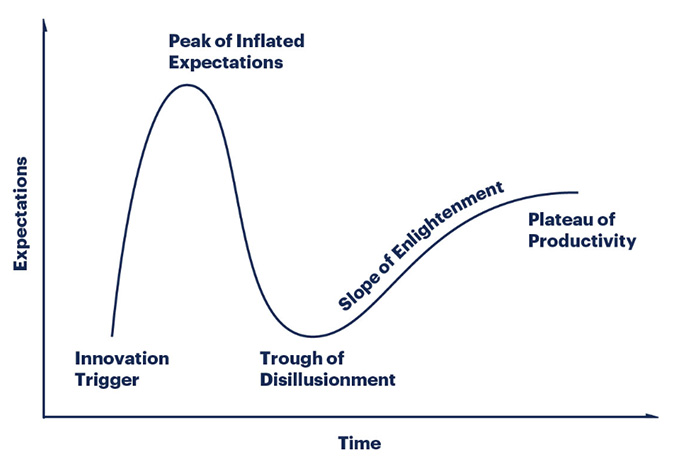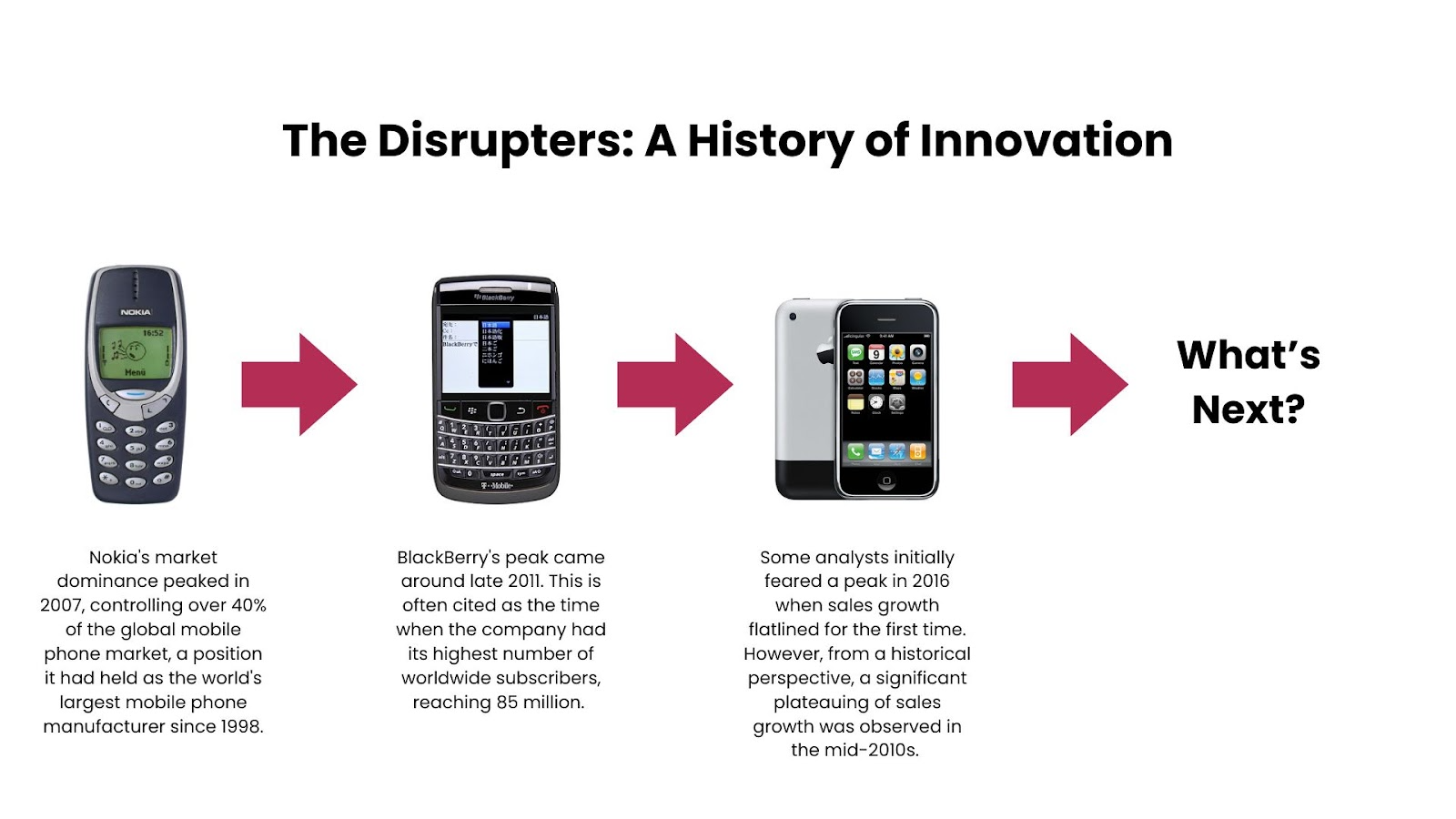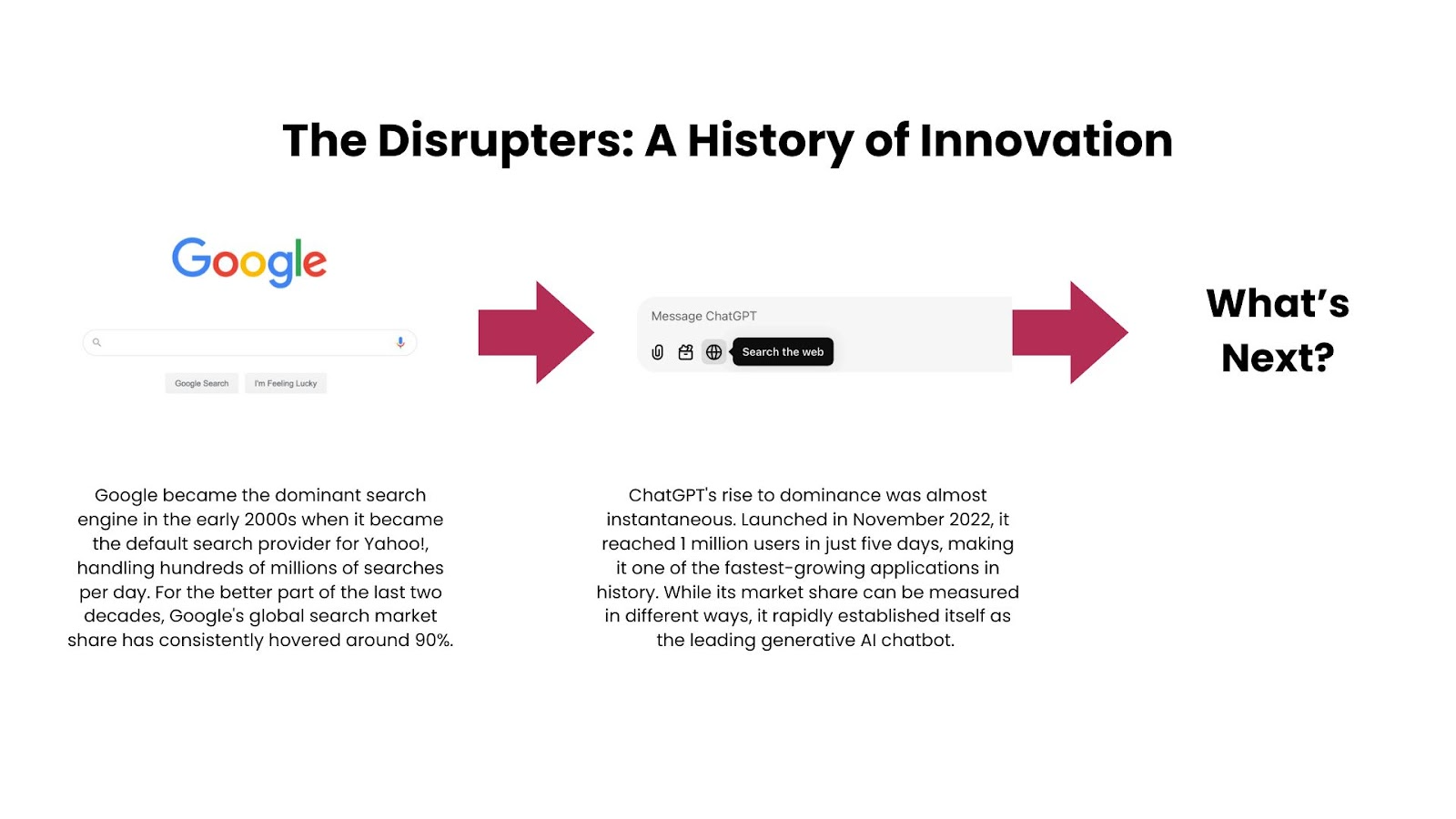From Nokia to GPT-5: How the Cycle of Disruption Paves the Way for What's Next
September 17, 2025
So, GPT-5 is here. The palpable tension that filled the air of the tech world has given way to a new kind of silence, one not of disappointment, but of profound contemplation. We’ve all been holding our breath for this moment, the next iteration of a technology that promised a new dawn of artificial general intelligence (AGI). The whispers of its capabilities, from enhanced reasoning to true multimodal understanding, fueled a frenzy of speculation. It was meant to be the next big bang, a moment that would fundamentally alter our relationship with technology. But as the hype reaches its fever pitch and the reality of its release settles in, a question hangs in the air: is GPT-5 truly a revolutionary leap, or is it merely the best version of an old idea, signaling a new kind of plateau for the AI revolution?
The tech world operates on a predictable, and often deceptive, cycle of breathtaking innovation followed by a period of diminishing returns. This is the fundamental Hype vs. Reality contrast that defines our industry. We ride a wave of hype as a new technology emerges, promising to change everything and create a new future. It reaches its "Peak of Inflated Expectations," where the possibilities seem limitless, before inevitably crashing into the "Trough of Disillusionment." Eventually, it climbs the "Slope of Enlightenment" and settles into a Plateau of predictable productivity. It is precisely on this plateau that things become standardized, safe, and, most importantly, ripe for radical disruption.

For years, we've been living on the plateau of a few dominant tech giants, a world where the future seemed to be an incremental improvement of the present. But the feeling of a shift is in the air. We are entering a crucial moment where the next revolutionary innovation isn’t just a slightly better version of what we have, but a true paradigm shift created by a new generation of bold entrepreneurs. The question is no longer "what's next?" but rather, "when do we break the plateau, and who will do it?"
The GPT-5 Conundrum: A Case of Hype vs. Reality
To understand the current state of the tech industry, we must look at the most talked-about topic of our time: AI. The initial release of ChatGPT was a watershed moment, a disruptive force that offered a fundamentally new way to interact with information. The Hype vs. Reality cycle went into overdrive. Journalists, investors, and the public alike projected a future of artificial general intelligence (AGI) and a world transformed overnight. Now, with the release of GPT-5, the reality is beginning to set in.
GPT-5 is an undeniable technical marvel. It is smarter, faster, and more capable than its predecessors on key metrics. Its reasoning abilities have improved, it can handle more complex tasks, and its hallucinations have been reduced. But, for many, the grand promise of a paradigm shift has not been realized. The user experience remains largely the same: a conversational interface in which you type a prompt and receive a text-based answer. This is the essence of the plateau effect. We are now in a phase of optimizing the existing model, not reinventing it.
The incremental gains, while impressive to a computer scientist, are not the revolutionary leap the public was sold. The improvements are in accuracy, efficiency, and scale, not in a fundamentally new way of interacting with the technology. This is the same game Nokia and BlackBerry were playing with their incremental improvements. They were making better versions of what they already had, while the next big thing was brewing in a completely different lab. The current LLM market is an increasingly crowded field, with companies vying for marginal gains in benchmarks and performance. Everyone is chasing a slightly better model, leading to a new plateau where innovation is measured in fractions of a percentage point.
The Mobile Phone: From Plateau to Disruption
To understand this cycle, we need only look at recent history. Think back to the early 2000s. The mobile phone market was a serene plateau, a landscape dominated by corporate behemoths like Nokia and, in the enterprise space, BlackBerry. Nokia was the undisputed king, celebrated for its indestructible hardware, legendary battery life, and a user experience that, while basic by today's standards, was simple, reliable, and functional. They sold hundreds of millions of phones globally, and their brand was synonymous with mobile communication. BlackBerry, with its iconic QWERTY keyboard and secure messaging, had a near-monopoly on the corporate world.
At the time, the prevailing narrative was one of incremental improvements. Phones became smaller, their screens got a little more color, cameras had more megapixels, and you could play a slightly more complex version of "Snake." The operating systems, like Symbian, were capable but rigid. This was the point of diminishing returns. The phones were good, they were reliable, but they were not fundamentally different from one another. The industry was in a holding pattern, a comfortable space where optimization was prioritized over invention. The giants were too invested in their existing supply chains, business models, and user expectations to even consider a radical departure.
Then came the disruptive force that nobody saw coming, or at least, nobody with a vested interest in the current system. In 2007, Apple introduced the iPhone. It wasn't just a phone; it was a completely new way to interact with information and the world. It ditched the physical keyboard for a multi-touch glass screen and, crucially, introduced a full-fledged App Store. This wasn't an incremental improvement—it was a paradigm shift. Nokia and BlackBerry, so comfortable on their plateau, dismissed it as a novelty or a "toy." They were too wedded to their existing business models and supply chains to see the change coming. The rest, as they say, is history. The mobile industry was completely reset, paving the way for a new set of giants and countless startups built on the App Store ecosystem.

The Search Engine: From Plateau to New Frontier
A similar pattern has defined the information age. For over two decades, Google Search has been the unchallenged king. It has become an essential part of our lives, the first place we turn for any question, big or small. The core mechanism—typing in a query and getting a list of blue links—has remained largely unchanged. Over the years, Google has made incremental improvements: a better algorithm, richer snippets, featured answers, and personalized results based on our search history. But the fundamental user experience has plateaued. It's a highly optimized and incredibly effective system, but it's not a new one.
This is where the Hype vs. Reality cycle re-emerged with a vengeance. The introduction of ChatGPT and the broader class of large language models (LLMs) was a shock to the system. It offered a fundamentally different way to retrieve information: through a conversational interface. Instead of a list of links, you got a single, synthesized answer. The initial hype was off the charts, but now, a year or so after its launch, we are beginning to see the symptoms of the plateau effect. As we await the next iteration, GPT-5, we must ask: will it be a paradigm shift, or just an incremental improvement?

There is a growing consensus that GPT-5, while undoubtedly more powerful, will not fundamentally change the user experience in the way ChatGPT did. It will be faster, more accurate, perhaps more multimodal, and will be able to process larger amounts of data. But the core interaction, a text-based conversational answer, will likely remain the same. We are heading for a new plateau, one where dozens of companies are building similar models and applications, all vying for dominance in the same conversational space. This is the point of diminishing returns for the current LLM model. Everyone is playing the same game, just with slightly better pieces.
Where Startups Come In: The Opportunity to Disrupt
The Plateau is not a sign of failure; it is a signal. It tells us that a certain technology has matured and is now being optimized by the incumbents. It is at this precise moment that the greatest opportunities for disruption emerge. The big companies like Nokia, Google, and now the OpenAI/Google duopoly, are too committed to their existing business models, their revenue streams, and their corporate cultures to make the radical pivot necessary for the next revolutionary innovation. They will be focused on defending their existing territory, not exploring a new one.
This is where you, the entrepreneur, come in. The next disruptive force won’t be a slightly better version of ChatGPT, just as the iPhone wasn't a slightly better BlackBerry. The next big thing will be an entirely new way to interact with information, technology, or a physical product that we haven't even conceived of yet. Perhaps it will be an AI that doesn't rely on text, but on something else entirely, or an operating system for a new category of device we don't know exists yet. The potential is limitless, but it requires a fundamental break from the current model.
The current Plateau of LLMs is the starting gun for the next generation of founders. The core innovation of LLMs—the ability to generate human-like text—is now a commodity, and the real value will be created by those who can build entirely new products and experiences on top of, or even completely independent of, them. The next iPhone or the next Google will not be born out of a mega-corporation, but from a small, agile team that has the courage to see beyond the current hype and redefine what's possible.
So, what's next? The question marks around GPT-5 are not a sign of stagnation, but a beacon of opportunity. The time for startups to innovate is now. The giants have laid the groundwork; your job is to build the future on a new, un-hyped foundation.
Ready to Build the Next Big Thing?
You have the vision to see beyond the plateau. Now, you need the right co-founder to turn that vision into reality. At CoffeeSpace, we connect ambitious founders with partners who share their passion for disruptive innovation. Don't build an incremental improvement; build a paradigm shift. Download our list of 50 resources here to start building.

.png)